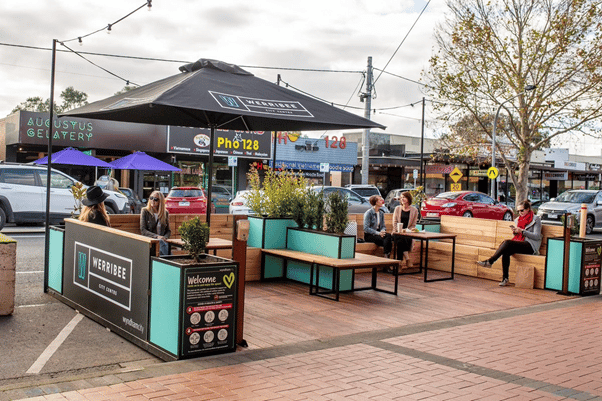

In an attempt to boost economic activity post-lockdown, hospitality venues across Victoria will be utilising the footpaths and streets/lanes/roadway for additional, socially-distanced dining spaces.
While we support these initiatives, we want local governments and road authorities to ensure they are re-allocating this space safely.
Here are 8 simple road safety considerations for street dining:
- Can the road/street be closed to motorists? – elimination of the risk is the ideal, if possible.
- Speed environment – is the dining space in a low speed environment? Have temporary Local Area Traffic Management devices been installed?
- Visibility of dining areas – will the dining space be seen in all lighting conditions? Are sight lines to these new areas blocked?
- Interaction with parking – how does the dining space interact with nearby parking spaces (including loading zones). Are sight lines blocked? Are there wheel stops in place? Is there space for vehicle swept path?
- Offset from traffic lane – how far is the dining space from the traffic lane? Is there physical separation provided (eg. approved road safety barrier system or bollards)
- Access for pedestrians – how do pedestrians access the dining space? Are there new sight line issues being created?
- Interface with the footpath – is the dining space blocking the footpath pushing pedestrians into dangerous areas?
- Impact on other road users – is the dining space presenting a danger to cyclists, motorcyclists or other vehicles by pushing them into dangerous areas?
Feel free to get in contact if you would like to discuss the best-practice example of safety assurance for street dining from Wyndham City Council’s Parklets: https://www.wyndham.vic.gov.au/news/new-alfresco-design-will-breathe-live-werribee-city-centre
Photo sources: Ludo Campbell-Reid & Glam Adelaide
